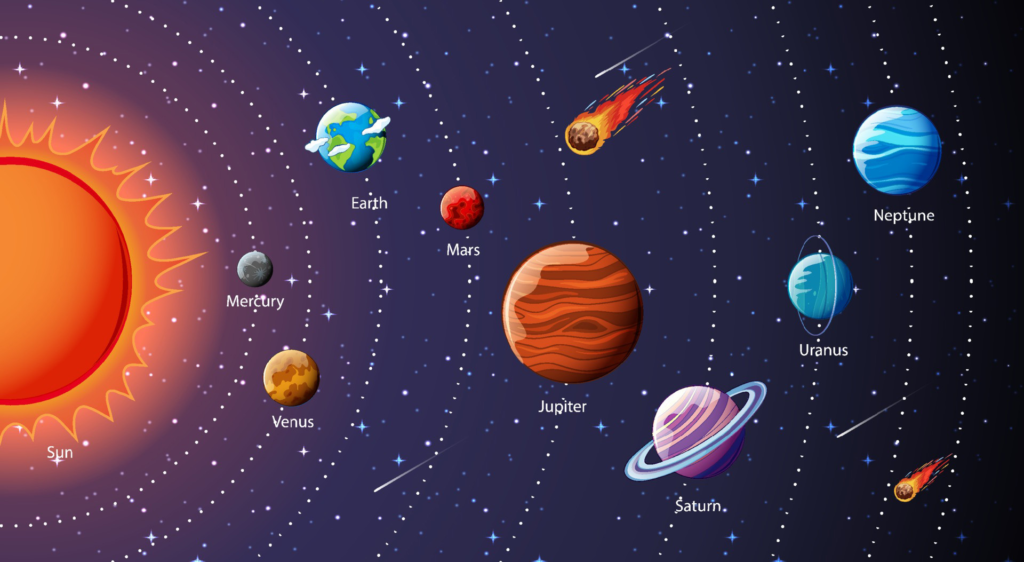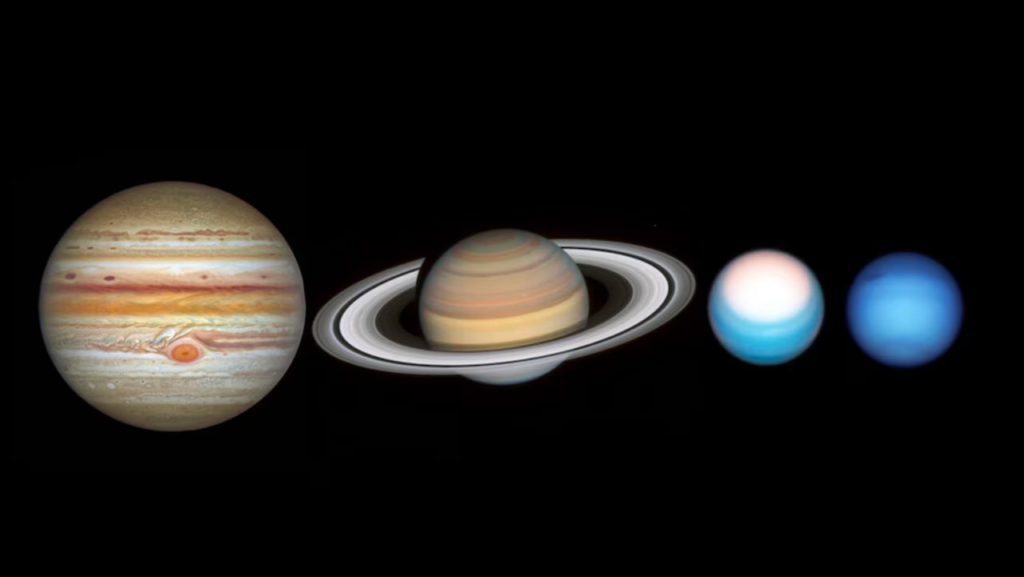The Planets And The Solar System
key notes :
The Solar System

- The Solar System consists of the Sun, eight planets, moons, asteroids, comets, and other celestial objects.
- The Sun is at the center of the Solar System and provides light and heat to all planets.
The Planets

There are eight planets in the Solar System: Mercury, Venus, Earth, Mars, Jupiter, Saturn, Uranus, and Neptune.
Planets are divided into two groups:
- Inner Planets: Mercury, Venus, Earth, and Mars (rocky and smaller).
- Outer Planets: Jupiter, Saturn, Uranus, and Neptune (gas giants, except Uranus and Neptune which are ice giants).

Characteristics of Planets

- Mercury: Closest to the Sun, smallest planet, no atmosphere.
- Venus: Brightest planet, has thick clouds, and is the hottest.
- Earth: Our home, the only planet known to support life.
- Mars: Known as the “Red Planet,” has the largest volcano, Olympus Mons.
- Jupiter: Largest planet, has a Great Red Spot (storm), and many moons.
- Saturn: Famous for its rings made of ice and rock.
- Uranus: Rotates on its side, blue-green color due to methane gas.
- Neptune: Farthest planet from the Sun, known for its strong winds.
Moons
- Many planets have moons that orbit them.
- Earth has one moon, while Jupiter and Saturn have the most.
Asteroids and Comets

- Asteroids: Rocky objects mostly found in the Asteroid Belt between Mars and Jupiter.
- Comets: Made of ice and dust, they have a glowing tail when near the Sun.
Orbits and Rotation

- Planets orbit the Sun in elliptical paths (oval-shaped).
- Each planet also rotates on its axis, causing day and night.
Fun Facts
- The Sun is a star and makes up 99.8% of the mass of the Solar System.
- A year on Mercury is only 88 Earth days, while Neptune takes 165 Earth years to orbit the Sun.
Exploration
- Scientists use telescopes and space missions (like Mars rovers and satellites) to study the Solar System.
- Humans have landed on the Moon, and robots have explored Mars.
Why Study the Solar System?
- Helps us understand our planet and its place in the universe.
- Inspires curiosity about space and future exploration.
Let’s practice!

